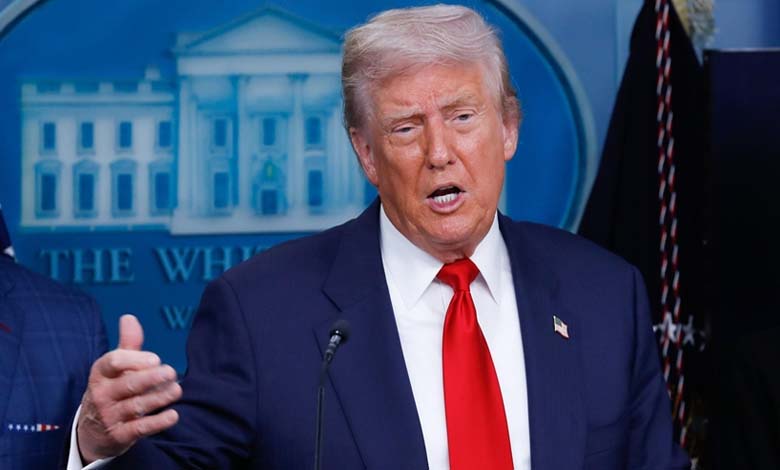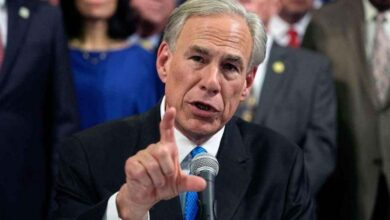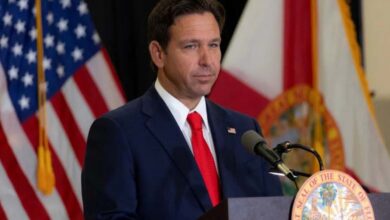Trump plans to revive the War Department: what do we know about the Pentagon?

US President Donald Trump intends to restore the Department of Defense to its original name, the “War Department,” which it bore until 1949.
This initiative carries historical and symbolic weight, aiming to reshape the role of the military establishment in American politics.
What do we know about the history of the US Department of Defense, according to its official website?
-
Washington denies transfer of Iranian enriched uranium before U.S. strike
-
Sources Reveal Shocking Pentagon Intelligence Report on Iran’s Nuclear Program
June 14, 1775
The Continental Congress approved the creation of the Continental Army, which was placed under the command of George Washington the following day. After the Revolution, it became known as the United States Army.
August 7, 1789
Congress established the War Department to oversee the Army, Navy, and Marine Corps.
April 30, 1798
The War Department transferred authority over the Navy to the newly created Department of the Navy.
July 2, 1926
The Air Corps of the US Army was formally organized.
-
Trump Does Not Rule Out Working Toward Regime Change in Iran
-
Trump announces destruction of Iran’s nuclear capabilities in a series of US strikes
Early 1940s
The US Army underwent a major reorganization to improve its operational efficiency for the war effort. Combat forces and logistical functions were grouped into three new field commands: ground forces, air forces, and service forces.
1941
Overcrowding led the War Department, the Secretary of War, and Congress to approve the construction of the Pentagon. At the time, more than 24,000 civilian and military employees were spread across 17 buildings in the Washington, D.C. area, with projections that the workforce would exceed 30,000 by early 1942.
January 5, 1943
The Pentagon, new headquarters of the War Department, was officially opened.
-
Washington evacuates its nationals from the Middle East in preparation for any emergency
-
Facing China and U.S. Ambiguity.. Japan Rebuilds Its Military Power
July 26, 1947
President Harry Truman signed the National Security Act. This legislation merged the War and Navy Departments with the newly independent Air Force into an organization called the National Military Establishment, led by a civilian Secretary of Defense who also oversaw the Joint Chiefs of Staff. The act also created the CIA, the NSA, and the National Security Council.
September 17, 1947
The National Military Establishment began operations under Secretary of Defense James V. Forrestal, who had resigned as Secretary of the Navy to take on this new role.
September 18, 1947
The United States Air Force was officially established.
-
You Will Pay the Price: Strong U.S. Warning to Iran Over Houthi Support
-
Leaks or Settling Scores? Behind the Pentagon Dismissals
August 10, 1949
The National Security Act was amended, renaming the National Military Establishment as the Department of Defense. The amendment abolished cabinet-level status for the secretaries of the Army, Navy, and Air Force, placing them under the authority of the Secretary of Defense, whose powers were expanded. It also established the position of Chairman of the Joint Chiefs of Staff.
Today, the Department of Defense is the largest US government agency. It oversees the six branches of the armed forces: the Army, Marine Corps, Navy, Air Force, Space Force, and National Guard, as well as numerous intelligence agencies such as the DIA and the NSA.
Its headquarters, the Pentagon, located in Arlington, Virginia, houses over 23,000 military and civilian personnel. The Secretary of Defense, a cabinet member, directs the department with Senate approval.
-
Political Expert: Terrorist Groups Have Entered the Age of Artificial Intelligence – Governments Must Rethink Their Security Strategies
-
After the Surprise Decision… Behind the Scenes of Elon Musk’s Departure from the U.S. Government
The Pentagon employs more than 3.5 million service members and civilians across 4,800 sites in 160 countries.
The Department of Defense has 11 combatant commands, each with geographic or functional responsibilities providing command and control of military forces in both peacetime and wartime.
It is considered the world’s largest employer, with a fiscal year 2024 budget exceeding 841 billion dollars.
-
UAE Discusses Formation of Interim Government in Gaza with Washington and Tel Aviv
-
Trump to Chair Expanded Meeting on Gaza Amid Low Expectations for a Near Agreement
Trump has repeatedly expressed interest in changing the department’s name, arguing that “Department of Defense” sounds weaker than the original “War Department.” He has described the former title as more consistent with America’s victorious history in the two world wars and as a way to reinforce the military’s offensive posture rather than a purely defensive role.
Secretary of Defense Pete Hegseth has backed the idea, stating that it is “coming soon,” signaling internal consensus within the administration.
However, implementing this change requires congressional approval, making it a significant legislative challenge. Nevertheless, the Trump administration is exploring alternative paths to bypass this obstacle.












